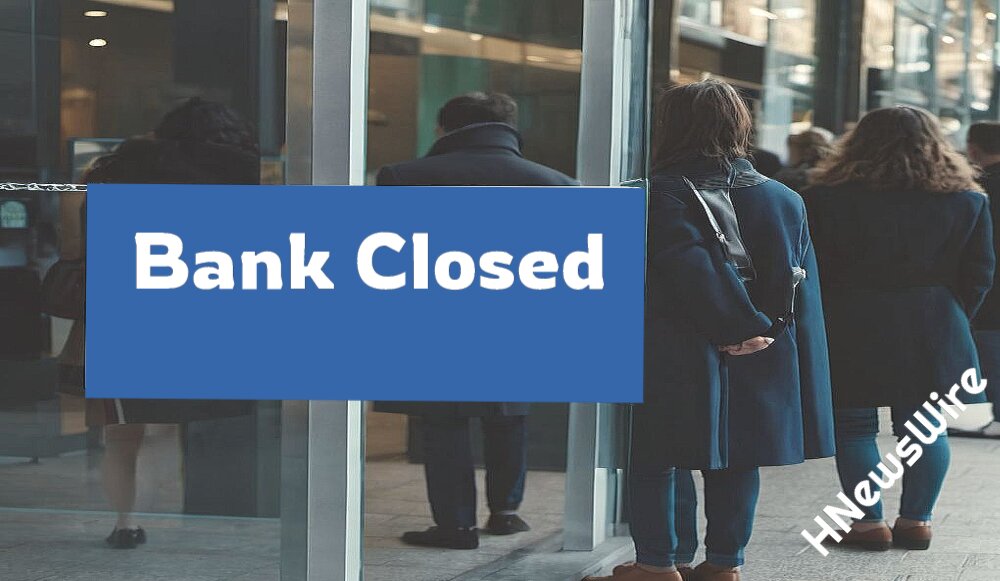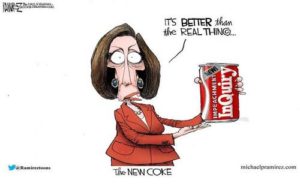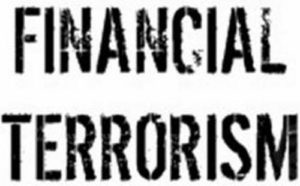
By Pam Martens and Russ Martens:
Following the second, third and fourth largest bank failures in U.S. history in the spring of last year, Federal Reserve Chair Jerome Powell gave his semiannual monetary policy report to the House Financial Services Committee and the Senate Banking Committee in June. During both appearances, Powell stated the same thing: “The U.S. banking system is sound and resilient.”
But according to a report last week from the federal agency whose mandate is to keep federal regulators apprised of the true condition of the U.S. banking system, it is actually ripe for another crisis and its condition is “fragile and uncertain.”
The federal agency whose researchers are taking the latter position is the Office of Financial Research (OFR). The agency was created under the Dodd-Frank financial reform legislation of 2010 to prevent another 2008-style financial crisis by providing federal regulators with ongoing analysis and warnings on systemic risks to financial stability.
It should also be noted that the OFR researchers’ findings are consistent with the credit ratings agency, Moody’s, which downgraded the entire U.S. banking system to negative from stable on March 13 of last year.
OFR’s slap down of Fed Chair Powell’s Goldilocks view of U.S. banks came in a research brief released last Wednesday by OFR Research Principal, Peyton Young, and OFR Financial Analyst, Tom Doolittle. In one deeply troubling paragraph, the pair wrote:
“Many of the conditions that precipitated the 2023 banking crisis persist. Fair-value losses in bank securities portfolios are still large, deposits continue to decline, bank equities are underperforming, and the higher interest rates that catalyzed the banking crisis in the first place have not abated and may even increase further.”
In another paragraph that carried the headline “Banking Conditions Remain Fragile and Uncertain,” the OFR researchers wrote:
“Some banks remain pressured by conditions similar to those that precipitated the bank failures earlier in the year, including large fair-value losses in securities portfolios (see Figure 4) and a declining base of deposits (see Figure 5). Since 10-year Treasury rates increased in 2022, banks have posted significant fair-value losses in their securities portfolios. As of Q2 2023, banks’ fair-value losses on securities totaled $558 billion, a 10% discount on their amortized cost. In addition, rising short-term rates have catalyzed continued deposit outflows from banks. Since Q2 2022, approximately $1.3 trillion of deposits—or 7% of total deposits—have been withdrawn by customers, primarily due to more attractive yields on other investments such as money market funds.”
A key purpose of the brief was to recommend “two forward-looking metrics that can identify banks that are vulnerable to future fair-value losses before those losses are crystallized.”
But what we found far more interesting about the brief was its silence on the biggest threat to financial stability in the U.S. – the mega banks on Wall Street.
The two researchers acknowledge the following:
“The 2023 bank failures provide a foretaste of what could happen next. Concern over the safety of uninsured bank deposits may lead to substantial customer withdrawals that shrink a bank’s capital base, necessitating deleveraging to meet cash outflows and regulatory capital requirements.”
This, in turn, the researchers write, could “require these banks to realize or potentially realize fair-value losses on their securities portfolios. This could further exacerbate the loss of confidence in a bank, leading to eventual receivership.”
But nowhere in the research paper is there any mention that the banks holding insane levels of uninsured deposits today are the same banks that the Fed bailed out to the tune of trillions of dollars during the financial crisis of 2008. See, for example, our report: At Year End, 4,127 U.S. Banks Held $7.7 Trillion in Uninsured Deposits; JPMorgan Chase, BofA, Wells Fargo and Citi Accounted for 43 Percent of That.
At the time of their failure in the spring of 2023, Silicon Valley Bank held approximately $175.4 billion in total deposits; Signature Bank held $88.6 billion in total deposits; and First Republic Bank held $103.9 billion in total deposits.
Those failures started a systemic contagion effect, forcing the Fed to create yet another bailout program, the Bank Term Funding Program.
But compare the amount of total deposits at those three banks ($368 billion) to the systemic risk posed by the largest bank in the U.S., JPMorgan Chase.
According to JPMorgan Chase’s call report with its banking regulators for the quarter ending June 30, it had $1.04 trillion in uninsured deposits in its domestic branches and another $437.6 billion in deposits in foreign offices that lack FDIC insurance, bringing its total deposits that lack FDIC insurance to $1.48 trillion. JPMorgan Chase’s uninsured deposits represent 59 percent of its total deposits of $2.5 trillion.
Despite JPMorgan Chase’s stunning threat to financial stability, no banking regulator has had the courage to publicly recommend breaking up this behemoth, serially-charged bank – notwithstanding an international bank study, using 150 years of data, showing mega banks produce financial instability and more severe banking crises.
It’s time for Fed Chair Powell to start telling the truth to the American people or step aside and make room for someone who will.
Related Article:
New Book Proves U.S. Is Living Under a Disastrous Banking Model from a Century Ago

![]()






